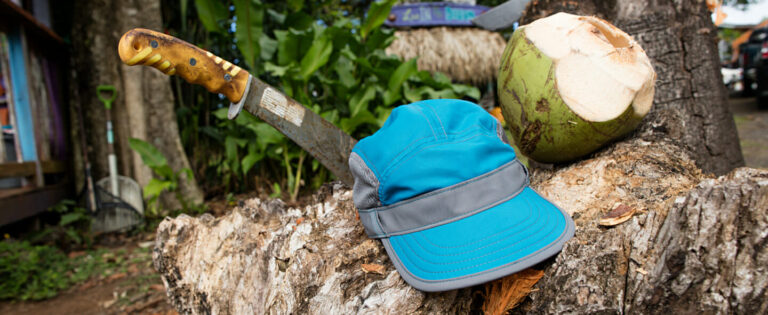The other day I was sitting at the kitchen table with some friends: „If I buy a new express, then only this very light one from DMM or Petzl. It is expensive, but the express is much better than the other ones. Even if it’s beyond my budget, nothing comes from nothing.“ someone says and immediately looks into questioning faces.
I think to myself: „Man, if I were you, I would have kept my mouth shut, because there are not only people sitting there who climb better than you, but who also know a lot more about the topic. As if a wasps‘ nest had been stirred up, a discussion broke out that has lasted more or less until today, and I would like to share the preliminary results with you. Today in the ring: price vs. performance.
Or more specifically, the question: Is everything which is expensive necessarily good and everything which is cheap necessarily low-quality? And how do I proceed if I only have a small budget but still need full-quality equipment?
DOES QUALITY ALWAYS HAVE TO BE EXPENSIVE?

Useful equipment is already available for comparatively little money, better equipment is then available for considerably more money and the hottest equipment of all is available for really big bucks. Right or wrong? Well, as always, this is not an easy question to answer, nor is it a general one.
Since the discussion at the kitchen table started with the topic of express sets, let’s just continue the old tradition. So let’s play the game and ask: What about price and performance in the field of (climbing) equipment?
There’s nothing wrong with it, no matter how harnesses, carabiners, ropes and the like look, they have to be safe. The good news right away: they are. All climbing equipment that is regularly sold in the EU must meet certain standards and be tested according to their criteria. For this purpose, there is the European Standard (EN), which is formulated for each item of equipment and ensures a standardised safety test.
Each test method is only used for a specific product group and carries its own identifier. With the designation „conform european“ (CE mark), the manufacturer declares that it has been tested according to EN and has been declared safe. The number after the mark indicates which test centre carried out the test.
Here is an example. On my climbing harness you will find, among other things, the following information: EN 12277 and CE 0123, which means that the harness was tested according to the standard for „mountaineering equipment and harnesses“ and certified by TÜV Munich. In addition to the EN, there is also the voluntary standard of the mountaineering associations, the UIAA standard. This standard applies worldwide and usually sets stricter test criteria. If a product bears the UIAA logo (a mountain in a circle with the inscription „UIAA“), then it has also been tested as compliant by the UIAA.
However, unlike the European standard, the UIAA standard is not compulsory, so not all products on the market are tested according to the UIAA standard. However, both standards serve to protect the consumer from dangerous or defective goods. Fortunately, cheap = unsafe is not true here.
Especially with a climbing harness it is important that it fits well. If something pinches and jams on the first route, the whole climbing session is no fun. However, I am of the opinion that comfortable or uncomfortable is not a question of price, but rather depends on one’s own physique and personal needs. If in doubt, just try them on. Cheap = inevitably uncomfortable, so that doesn’t necessarily correspond to the truth either. But comfort can also mean something else: Namely, what extras does the belt have and how easy is it to tighten or adjust?
Here, too, you have to ask yourself what your personal needs are. For example, if you mainly go indoor sport climbing, you don’t usually need a fully adjustable harness. Even a lot of gear loops or eyelets for ice screws are rather unimportant. It is much more important that the harness is easy to put on, that the buckles run well and are intuitive to use. Fortunately, all this is not necessarily a question of price. A clear question mark should therefore be added to the statement „cheap = super uncomfortable“.

When it comes to climbing equipment, the weight of individual items of equipment sometimes varies widely. And it is also clear that what weighs less, but can still do the same as its heavier colleague, is sometimes significantly more expensive. Let’s take a closer look at the example from the beginning. There are express sets that weigh only a fraction of standard express sets. It can happen that the currently lightest expresses on the market weigh only half as much as „normal“ express sets.
Depending on the version, there are values ranging from around 65 grams to approx. 125 grams. In between, there is practically everything at different prices. If you ask why, you will quickly see that a special carabiner design and a strap made of light Dyneema make the lightweight construction possible. That this has an impact on the price is hardly surprising. Nevertheless, you should ask yourself what you will mainly use the equipment for.
For example, if this is done in alpine climbing or big walls, it is worth looking more closely at the weight. Those who feel at home in the upper levels of difficulty will certainly have special requirements. But especially for beginners or climbers who mainly use the climbing garden at home, it makes sense to weigh up price and weight.
Backpacks are virtually omnipresent in mountain sports. No wonder, you can pack things into them, they are much more comfortable to carry than, for example, grandma’s old jute bag and you can search around in them for ages without finding the desired item. But joking aside: from cycling to trekking tours, there is almost no area for which there is not a special backpack.
So it’s no wonder that the individual models sometimes look very different. But they all have one thing in common: they have to withstand a lot. Nevertheless, in this area, too, it is the weight, the quality of the carrying frame or the general equipment and size that primarily affect the price. Numerous models on the market show that this does not necessarily have to be at the expense of robustness or durability.
ACHIEVE A LOT WITH A SMALL BUDGET – THAT’S THE WAY TO GO
All well and good, we have now seen that price and performance do not have to be directly related. But what can you do if you want to put together the most versatile equipment possible on a comparatively small budget?
There is special equipment for almost every area of use and that makes sense. Nevertheless, I keep noticing people who tend to overdo it in this respect. There are people who carry an ultra-light backpack just to carry three books to university. Or others who lug along a 3-layer Gore jacket for a day hike in the most stable summer weather. Or still others who have bought polarised glacier goggles for a visit to the beer garden. Or, or, or.
The paradox is not that these things are used on the principle of „they’re there anyway“, but that they were often purchased specifically for this purpose. And from a purely rational point of view, that’s a lot of nonsense. Anyone with a fat wallet will surely smile wearily at me, and that’s all fair enough. But for all those who, in the words of Bud Spencer, ask themselves the question. „And what about the coals?“, here are a few practical tips.
ASPIRATION AND REALITY

With every new purchase, there is always the question of what I would like to have and what I need it for. What will the item mainly be used for later on, is it up to the task or is it complete overkill? A trekking rucksack with a great carrying system is perhaps just too much for a visit to Aunt Lisbeth’s house. But if someone has a super bad back, for example, and can hardly exist without a backpack with a special carrying system, it makes sense to choose more specifically for day trips or smaller excursions.
Or if, for example, you cycle to work in all weathers and need a waterproof backpack or robust saddle bags, you will certainly have to choose differently than someone who cycles to a picnic in the summer. Therefore, it can be absolutely helpful to simply listen to yourself and find out exactly what your personal needs are. Budget tip number 1 is therefore: weigh up requirements against reality.
No, I’m not trying to persuade you to hike across glaciers in sandals or to take only a sawed-off fork instead of a full set of camping cutlery. I’m thinking more of things that have an imaginary „nice-to-have“ sticker. Here’s an example: Sure, it can be useful and pleasant to have a seat cushion for breaks on high-altitude or ski tours. But no one really needs it, because you can just sit on your backpack or skis or even in the pub.
There are many things of this kind. So if you’re in the process of putting together new equipment with limited means, budget tip number 2 comes highly recommended: Only put on the equipment list what is really needed. This even has a practical side effect. If you don’t lug around all kinds of unnecessary junk, it’s often literally easier to get around, last longer or arrive faster. If, in the course of time, you realise that this or that is still missing for perfect happiness, you can always buy it.
QUALITY

A wise man once told me something like this: „You don’t have enough money to buy cheap crap.“ This sounds paradoxical at first, but it hits the nail on the head. Things that are sometimes offered at rock-bottom prices, often cheap goods from the Far East, often don’t last very long.
Especially in the outdoor and camping sector, many discounters provide us with a flood of quasi-disposable products every year. In regular and even heavy use, products of this kind often reach their limits. If you have to buy a new one after one season, you haven’t gained anything and usually lose money. However, it can be worthwhile to check out the high-quality second-hand market, especially in the area of clothing.
However, this is not advisable for safety-relevant equipment such as climbing harnesses, ropes or carabiners, because you usually don’t know what the predecessor did with them. Therefore, budget tip number 3 is to buy high-quality items, but keep an eye on the price.
„MISUSE“
There are special products for every sport and its sub-types. Backpacks, clothing, shoes or sunglasses are just a few examples. This may all make sense, but it is often easy to misuse things or use them for other disciplines without it being too noticeable or annoying. For example, telescopic poles are not only useful for long hikes in summer, they can also be used for ski tours in winter. A small bike backpack is also great for day hikes.
Personally, for years I took my climbing backpack with me on ski tours in winter. A good friend of mine always wears his running shirts when touring on his bike, and there are supposed to be people who wear the same softshell both for alpine tours and for skating (i.e. cross-country skiing, not playing cards). If you are a little creative here, you can save one or two pounds. So budget tip number 4 is to make the versatility of individual items of equipment an important selection criterion.
TO SUM UP

Before you buy something new, it can be helpful to think about exactly what you need it for. If you only have a comparatively small budget or don’t want to spend half a month’s salary on your first steps in a new sport, you can save a few pounds here and there without ending up in the junk section.
The saying „less is sometimes more“ perhaps fits quite well here. And as is so often the case in life, a decision in this area is not for eternity. For the start in a new sport, compromise solutions regarding equipment are usually a good thing. After some time, if you are sure that you want to progress in the sport, you will find out on your own what is still missing and what your personal needs are.
However, if you are now thinking with a superior grin, „Oh man, the Swabians are in a particularly Swabian mood again today“, I can only tell you one thing: I’m from Baden, you smart aleck 😉




